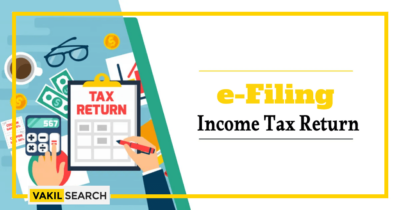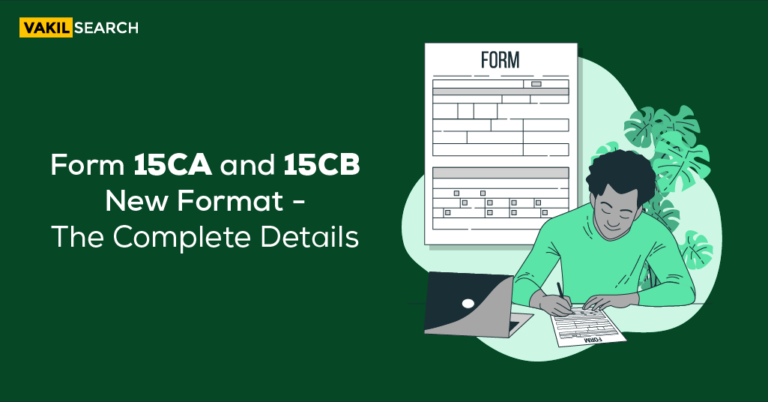Is tax refund taxable? Where do you call when a income tax refund is not issued? What are the reasons IT return has not been credited to the account? And, what is a tax refund? These are some of the most common questions related to ITR, and this post answers all of them.
Income Tax Refund Status: Overview
If you fail to pay your income tax refund on time, there may be penalties and you will receive an income tax notice. Getting your refund can take a while. In fact, it’s pretty common for them to be delayed for several months, which causes a lot of confusion among citizens. Let’s look at a few questions you may have about getting your refund, and Income Tax refund status.
As an example, we’ll discuss the reason for income tax returns, how to claim a refund, what to do if you have not received the same, and what to do if the check is lost.
How to check ITR Refund Status?
If you have filed your Income Tax for the present financial year and have requested a refund, you can check the income tax refund status of your request.
If you have filed your tax online, here’s where you can also check the status of your refund.
You will need your PAN card number and the assessment year to check the status of your refund request. Give it two to three weeks before checking the status.
Discover the seamless power of online bookkeeping – empowering your business with real-time insights and financial clarity, all at your fingertips.
Income Tax Refund Status Customer Support
The status of your tax refund can also be checked by calling the following Toll-free numbers:
- Checking ITR Refund Status of e-filed returns: 1800-425-2229
- Checking other filing and refunds: 1800-180-1961
- Checking banking-related transactions and queries: 1800-425-9760
How Can I Claim my Income Tax Refund?
To streamline the process of obtaining a tax refund, it is recommended to include your investments in Form 16 (such as life insurance premiums, house rent, equity/NSC/mutual fund investments, bank fixed deposits, tuition fees, etc.) when filing your income tax return. Ensure that you submit the required supporting documents along with your return. In the event that you neglected to do so and have been paying excessive taxes that could have been avoided, you will need to complete Form 30.
Form 30 serves as a formal request for a review of your case and a refund of any excess tax you have paid. It is imperative to file your income tax refund claim before the conclusion of the financial year. Additionally, your claim must be accompanied by a return in the prescribed form as outlined under section 139 of the relevant tax regulations.
Maximize your tax-saving potential – use our Tax Calculator for personalized results.
Due Date to Claim Income Tax Refund
Income tax refunds should be claimed within one year from the end of the assessment year. However, in certain circumstances, assessing officers may consider refund claims that were filed after the prescribed due date. In case you forgot to file your Income Tax Return within the due date, you can file a belated return until December 31st.
Here are important points to remember:
- Income tax refund claims will not be considered if six consecutive assessment years have already been completed.
- The refund amount should be below Rs. 50 lakh for a single assessment year.
- Late claims for refund will not accrue any interest.
- If the delayed claims require verification, the assessing officer may reconsider the claim.
Who is Eligible for Income Tax Refund?
There are several scenarios in which you may be eligible for a tax refund. Some of these situations include:
- If the tax paid in advance through self-assessment exceeds the tax payable based on regular assessment.
- If the amount of tax deducted at source (TDS) from salary, interest on securities or debentures, dividends, etc. is higher than the tax payable based on regular assessment.
- If the tax liability, determined through regular assessment, is reduced due to the resolution of an error in the assessment process.
- If the same income is subject to taxation both in a foreign country (under an agreement to avoid double-taxation with the Indian government) and in India.
- If you have investments that provide tax benefits and deductions, but you failed to declare them while filing your taxes.
- If, after considering the taxes you have paid and the deductions you are entitled to, the amount of tax paid is in the negative.
What is the Income Tax Amount that I will get back?
To determine the refund amount for your income tax, it is necessary to calculate your tax liability. If the taxes you have paid exceed your tax liability, you will be eligible to receive the excess amount as a refund.
How is Income Tax Refund Processed?
The processing of Income Tax (IT) refunds is carried out by the Income Tax authorities situated at the Centralised Processing Centre (CPC) in Bengaluru. Once the assessee submits their Income Tax Returns (ITR), the refunds are processed accordingly. If there is any tax reimbursement applicable during the ITR processing, the IT refund banker receives the refund orders generated and transmitted by the IT authorities.
How is the Payment of Income Tax Refund Made?
The income tax refund is disbursed through one of the following methods:
- Direct transfer to the taxpayer’s bank account: This is the standard method used to transfer income tax refunds to taxpayers. The transfer is typically conducted through NECS/RTGS systems. To ensure a smooth and swift transfer of funds, it is crucial for taxpayers to provide accurate bank account details in the return forms when filing their returns.
- Income Tax refund via cheque: This option serves as an alternative for transferring income tax refunds. In cases where the bank details provided by the taxpayer during the filing of Income Tax Returns (ITRs) are unclear, incomplete, or incorrect, the Income Tax authorities issue a cheque addressed to the account number provided by the taxpayer during the filing of their returns.
How do I Track My Income Tax Refund?
The Income Tax department provides a facility to track the status of your refund. If your refund process is still pending with your designated officer, you will receive a notification informing you about the same.
Here are two steps to claim your income tax refund:
- Direct Transfer of Refund: If you have excess tax paid, you can opt for a refund through direct transfer to your bank account. The refund amount will be credited to your account using ECS transfer, RTGS, or NECS methods, facilitated by the State Bank of India. To track the status of your income tax refund, you can visit the official website of the Income Tax department (http://www.incometaxindia.gov.in) or the NSDL-TIN website and click on the “Status of Income Tax Refunds” section. You will need to provide your PAN number and assessment year to access the refund details.
- Refund by Cheque: If you have chosen to receive your refund via cheque, you can track its delivery using the reference number provided by the Income Tax department. The speed post service is responsible for delivering the cheque to you.
Interest on Delayed Income Tax Refund
As per Section 244A of the Income Tax Act, if there is a delay in the payment of your refund, the Income Tax Department is liable to pay interest at a rate of 6%. The interest will be calculated from the date on which the tax payment was made to the date when the refund is issued.
For instance, let’s consider an example. If you claim a refund of Rs.10,000 for the Assessment Year 2020-21 and you receive the refund in March 2021, the interest on your refund amount will be calculated from April 2020 to March 2021.
How to Update Details with Income Tax Department
If you need to update your contact details, such as your mobile number, email address, or address, with the Income Tax (IT) department, please follow the steps outlined below:
- Step 1: Visit the official website of the Income Tax department.
- Step 2: Log in to your account using your credentials.
- Step 3: Once logged in, you will be directed to a dashboard. Click on the appropriate option.
- Step 4: Modify the relevant sections to update your bank account and/or contact details.
By making these changes, the central TIN (Tax Information Network) database will be automatically updated with your updated bank and address information. Your refund amount will be processed based on these updated details.
How to Apply for Refund Reissue
Once you have verified your income tax return, you can contact the Income Tax (IT) department to inquire about the status of your income tax refund. A common reason for a delay in the refund could be issues with your bank account or address details. In such cases, you will need to request a “refund reissue” from the IT department.
Please note that this request can only be made after receiving an intimation from the department. The steps to apply for a refund reissue are as follows:
- Step 1: Visit the official website of the Income Tax department.
- Step 2: Log in to your account using your credentials.
- Step 3: Access the dashboard, which will be displayed on your screen.
- Step 4: Click on the “Pending Actions” option.
- Step 5: Locate and select the “Refund Reissue” button.
- Step 6: The refund reissue page will appear, where you should click on the “Create Refund Reissue Request” option.
- Step 7: Choose the bank account where you want your refund to be deposited.
- Step 8: Click on the “Proceed To Verification” button.
- Step 9: To submit the refund reissue request, you will need to provide an Electronic Verification Code (EVC).
- Step 10: Finally, click on “Submit.” The status of your refund reissue will be displayed on the dashboard.
Whom should I contact for refund-related queries?
|
If you have any queries regarding the refund of excess tax, you can reach out to the Aayakar Sampark Kendra Toll-Free number at 1800-180-1961 or send an email to refunds@incometaxindia.gov.in. For inquiries related to refunds or any modifications in the refund record for returns processed at CPC Bangalore, you can call the toll-free number 1800-425-2229 or 080-43456700. If you have any payment-related queries, it is advisable to contact the SBI Contact Centre Toll-Free number at 1800-425-9760. |
How do I rectify the mistakes in the name, and account number on the refund cheque received by me?
If you notice any discrepancies regarding your name or account number on a refund cheque, you should return the cheque to the CMP Operations Centre, State Bank of India, located at Survey No.21, Opposite Hyderabad Central University, Main Gate, Gachibowli, Hyderabad – 500019. In your request, kindly mention the need for the cancellation of the cheque.
Additionally, it is recommended to write a separate letter addressing the mistake and providing the correct information that should be updated.
Alternatively, you have the option to modify your name and account number by accessing the official website of the Income Tax Department of India. Log in to the portal, and follow the necessary steps to make the required changes to your name and account number. Once the modifications are initiated, a new refund cheque will be issued and sent to you.
Calculation of Income Tax Refund
Income Tax Refund = Total Tax Paid for the Year – Total Tax Payable for the Year
To calculate your income tax refund, you need to consider the total tax paid for the year, which includes advance taxes, TDS (Tax Deducted at Source), TCS (Tax Collected at Source), and self-assessment tax. If the total tax paid exceeds your actual tax liability, you can claim an income tax refund. An income tax calculator can be used for this purpose.
Here is an example illustrating the components involved in an income tax refund calculation:
Income Tax Refund Calculator Amount Taxable income (A) Rs. 5,00,000 Gross tax liability on the above (B) Rs. 12,875 Less: Foreign tax credit (if applicable) Rs. 1,000 Net tax liability Rs. 11,875 Add: Interest on tax liability (Sections 234A, 234B, and 234C) NIL Total tax liability Rs. 11,875 Less: Taxes paid (C) Rs. 25,000 Tax refund Rs. 13,125
From the example, it is evident that when B < C, you are eligible for an income tax refund. However, if C < B, it means that your taxes paid are less than your tax liability, and you will be required to pay the remaining income tax amount.
6 Reasons: Still haven’t received Income Tax Refund
The refund may not be generated even after filing the tax returns for the year for several reasons:
- The IT Department has not yet processed your Income Tax – If this happens to you, wait a while, before checking the status of your refund. Make sure you have sent your ITR-5 within 120 days of submitting your e-filing. If you fail to submit the ITR-V form within 120 days, you will have to repeat the refund process.
- Filing your Taxes Offline – You may have to wait for the paperwork to be completed, before expecting your refund. However, you are still able to check online after a few days, to see if your refund has been approved.
- Incorrect Details of Refund Banker – In some cases, your refund can get lost due to an error in the number or a change in the bank account. If this occurs, send your new/updated account number and MICR code to the Assessing Officer. You can find your assessing officer by this link.
- Incorrect Mailing Address on Form 16 – You can verify your speed post reference number on the NSDL/TIN website. If the address you submitted is incorrect, the checks may not be delivered. After filing the Tax and receiving the refund, you can update your address through this link.
- Did Not Request a Refund – Please note that refund requests can be corrected online with the refund request if you have incorrectly included certain income or deductions. If you are confused, please click the link for more details. speak to our experts.
- Incorrect Calculations Submitted – When the Tax department finds a discrepancy in the calculation, they will send a notice. If your calculations are incorrect, they will not refund the tax paid. Refund claims can still be supported with new calculations and supporting documents.
Discrepancies may also result in the Tax department sending you a notice to pay the extra tax. Be sure to recalculate at your end, keep supporting documents available, and if you have miscalculated at your end, pay the tax as soon as possible or within the given time limit.
What is an Income Tax Refund?
If the person paying you the money is aware of your earnings (your employer, for example), tax will be reduced according to your income tax slab. Taxes are usually deducted at 10% if the person paying you does not know what you earn each year. If the amount of tax you are paying is higher than the amount you should be paying, you may ask for a tax refund.
As a consequence, an income tax refund is a difference between the amount of tax you paid and your presumed tax liability. If the government deems your request reasonable, the government will refund you the money.
Tax Refund and Income Tax Filing
Every year, the Government of India urges taxpayers to pay their dues within the due date (usually 31st July, but often extended by a week or two). A person is only eligible for a refund if he or she files the tax by uploading Form 16.
Once you submit a detailed account of the income tax you have paid and the income tax deducted at source (by your employer or any other entity), the refund is issued. There is no separate process for requesting a refund if the amount deducted is greater than the amount payable.
However, you may opt for the mode by which the refund is paid out yourself. The two modes through which the government pays are mentioned below.
After filing the tax, the income tax software will automatically determine the refund by computing the TDS paid versus the actual income tax return online to be paid and will process the refund.
It usually takes two to three weeks for the status of your refund to even change. You can expect the refund to reach your account within four to five months of filing your taxes.
What are the ITR Refund Modes
To ensure transparency, the refunds are made only through these two modes:
- RTGS/NEFT
Refunds will be credited directly to your bank by the Tax Department. For a direct credit of your refund to your authorized bank, you will need the following details: the 10-digit account number, the MICR code (which your bank will provide you with), and the communication address.
- Cheques
You will receive checks for the refund account at your home address. You must provide the correct address. A mistake in entering the address will result in the check being returned.
While filing taxes online, taxpayers can choose the method of payment according to their convenience. It should be noted, however, that a simple error may result in a refund being delayed or even canceled.
Top 6 Reasons for Income Tax Refund
There are many cases wherein you will be eligible for a refund.
- If the tax you have paid in advance on the basis of self-assessment is more than the tax payable on the basis of regular assessment.
- If your tax deducted at source (TDS) from salary, interest on securities or debentures, dividends, etc. is higher than the tax payable on the basis of regular assessment.
- If the tax charged, based on regular assessments, gets reduced because an error in the assessment process was resolved.
- The same income is taxed in a foreign country (with which the government of India has an agreement to avoid double taxation) and in India as well.
- If you have investments that offer tax benefits and deductions that you have not declared. You are required to have a detailed list of the following investments and need to submit supporting documentation for the same.
- If you find that after considering the taxes you have paid and the deductions you have registered, the tax paid amount is negative. Necessary supporting documents are required for claiming the refund.
Conclusion
It is easiest to get your tax refund by declaring your investments when filing your IT return (form 16, which includes all investments you have made, such as life insurance premiums, rent paid, investments in tax-saving mutual funds, tuition fees, home loans, etc.) and submitting the necessary documentation.
Remember that the filling up of your Form 16, whether online or offline, is mandatory for claiming a refund. Submit the relevant documents for a faster refund process.
Income Tax Refund FAQs
What happens if I have not claimed my refund while filing my taxes or my TIN status shows that the refund has expired?
The Form 30 must be completed if you have not claimed your refund and you have been paying excess taxes you believe you could have avoided. In a nutshell, Form 30 requests that your case be examined and the excess tax you've paid refunded. You must submit your income tax refund claim before the end of the financial year. Please include the form (prescribed in section 139) with your claim. Refunds not presented for payment within 90 days are expired and canceled. You need to apply for a ‘Refund Reissue’ in the e-filing portal.
Does my Income Tax Refund earn me Interest?
In fact, interest is calculated from the first day of the assessment year to when the refund is paid at 0.5 % per month or 6% per year. It is interesting to note that even a part of the month is considered a full month for interest calculations. Only if a refund is more than 10% of the individual's tax due can a taxpayer claim interest on the refund.
Do I need to pay tax for the ITR Refund received?
The refund is not taxable at all. However, if you have received interest on the refund, then you will need to pay tax on the interest, according to your tax slab.
The status of the refund shows that the amount has been adjusted against the previous assessment year’s dues. What does this mean? Can I ask for a ‘refund re-issue’ in such a case?
You cannot reissue a refund when you have outstanding tax dues, since the income tax department adjusts your dues with the refund amount, in full or in part. Speak to our experts about this issue. A tax refund is a difference between the tax paid and presumed tax liability. Reasons for not crediting it range from not uploading Form 16 to the wrong address. But all of them can be resolved with a few simple steps.
Helpful Links:










